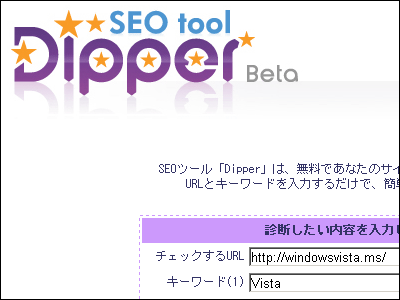Basic summary of SEO techniques to increase site revenue

Crawling & Indexing: Technical SEO Basics That Drive Revenue (Case Study) | Robin Rozhon
https://rozhon.com/blog/crawling-indexing-technical-seo-basics-that-drive-revenue/
◆ Earnings are the most important
“Improving crawl speed, or similar metrics, and being touted at conferences and SEO podcasts is nice, but revenue is the most important thing for any e-commerce site ,” Rozhon said. Is called. In 2017, Rozhon's focus was on managing crawling and indexing himself, rather than relying on Google, to increase organic traffic revenue.
As you can see from the graph below, we started making technical changes in early spring and got results in the summer of that year. Priority landing pages , in particular, saw a 23.5% increase in organic revenue over the same period last year. As the year progressed, revenue increased, and as a result, we succeeded in increasing it by 54.9%, and in the first week of 2018, we succeeded in achieving more than 70% compared to the previous year.

◆ Manage crawling and indexing as well as content
At the beginning of 2017, there were over 500,000 indexed URLs, but Rozhon decided to de-index more than 400,000 URLs (mainly category pages) by the end of the year. successfully reduced the actual number of indexed URLs to about 100,000.

According to Rozhon, the reason why 80% of all URLs were de-indexed was because ``the search engine was indexing a large number of URLs in unnecessary categories'', and by doing this work He wanted to help search engines understand how the site was structured. By the way, when doing this work, you should look at
On the site Rozhon worked with, only 8.55% of indexed URLs counted at least one session in a month, which is a deadly low number, but after months of effort. As a result, it seems that the percentage was able to grow to 49.7%.
According to Rozhon, ``There is still work to be done, but we have reached 60% of our goal. This website is highly seasonal, and the tendency of users to see pages changes in summer and winter. So I don't think we'll reach 90%, but if your business isn't seasonal, you can aim for 80% to 90%.'
◆ Query string
The site Rozhon worked with, like all e-commerce sites, made extensive use of URL parameters . When analyzing the site with Google Analytics, it seems that there are 58 unique URLs in the category page. Also, most of them were ready for crawling and indexing, but they didn't have a clear strategy.
So Rozhon decided to collect all the parameters used by the site. After collecting as much data as possible from Google Search Console , Google Analytics, log files, Screaming Frog , etc., extracting all the parameters, and taking time with the developers to write down the function of each parameter, we ended up with about 150 URLs. It looks like you found the parameters.

Next, by asking the question, ' Does this parameter change the appearance of the content when viewed by the user? '

After mapping and categorization, use Google Search Console and Bing Webmaster Tools to set all URL parameters. These tools are powerful and can immediately give clear instructions to search engines, but in order to solve them in a short time, it is recommended to process them directly on the code of the site.
However, there is no one-size-fits-all solution, and if you have many parameterized URLs that are already indexed, consider using ' noindex ' and ' canonical ' tags instead of restricting crawling. It seems better.
◆ Faceted navigation
Faceted navigation is a trouble maker that you often encounter on Rozhon's e-commerce sites. The advantage is that you can create many landing pages at once, because every facet and filter combination will generate a unique URL. However, it seems that it is also a drawback because it creates a minor landing page that no one cares about.
Applying facets and filters to category pages can easily generate thousands of URLs. For example, 4 types of '7 types of brands', '4 types of gender (male, female, male, female)', '5 types of ratings (1 to 5 stars)', and '10 types of colors'. If facets are prepared, 1,400 (7 x 4 x 5 x 10) URLs will be generated.
So Rozhon decided to use the tree below to decide whether to use facets or filters to narrow down the products.

In addition, it was found that URLs generated by facets and filters were indexed by search engines, which had a negative impact, so Rozhon decided to treat facets and filters differently:
[Facet]
Display only what search engines can crawl and index in search results
・Including self-referencing canonical tags
Cannot search when multiple items are selected from the same facet

【filter】
・Not displayed in search results
・Contains “noindex” tag
Use URL parameters set in Google Search Console and Bing Webmaster Tools
Initially, it seems that they tried using the 'canonical' tag that refers to the category instead of the self-referencing 'canonical' tag, but another problem related to the 'canonical' tag occurred and Google was bypassing those problems. It was said that it did not work well. Also, since the site had thousands of URLs with filters that were already indexed, it was not possible to prevent crawling to those URLs, and the 'noindex' tag was also used to prevent search engines from indexing them. I heard that the search engine was unable to detect the 'noindex' tag.
'There are a lot of websites out there trying to apply more advanced SEO techniques, but you should try to get the basics right first. It's not rocket science, and it's not as cool as structured data, RankBrain , or voice search. No, but removing duplicate pages and consolidating signals into one correct URL is a great way to improve rankings, traffic, and ultimately revenue,” says Rozhon.
In addition, GIGAZINE is also taking similar measures, and by making full use of the above knowledge and skills to create articles and operate the site, it is easier to access a lot from the search results.
In other words, by ordering article advertisements from GIGAZINE, it is possible to easily apply the technologies we have seen so far, making it easier to increase profits.
If you request materials from the page below, the person in charge will respond quickly, so please feel free to contact us.
Advertising inquiry -GIGAZINE-
Related Posts:
in Note, Web Service, Posted by log1b_ok







